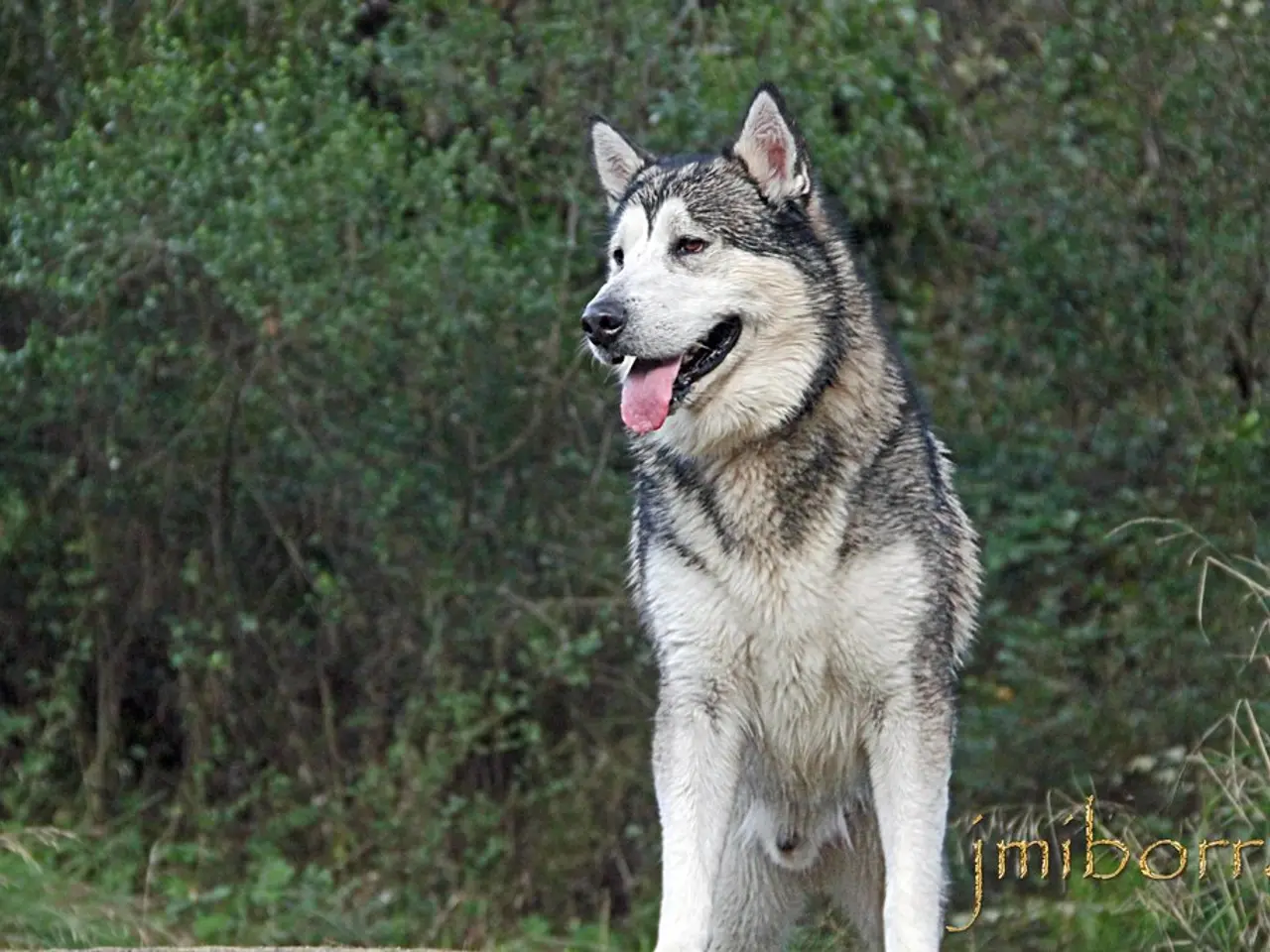Scientists Successfully Recreate Dire Wolf likeness in Groundbreaking Experiment
In a groundbreaking achievement, Colossal Biosciences has successfully revived a version of the dire wolf, a previously extinct species, marking a new era in genetic engineering. The company's CEO, Ben Lamm, made the announcement on Monday morning.
Colossal's analysis of the dire wolf genome is the most comprehensive to date, providing valuable insights into the species' genetic makeup. The genetic makeup of the bred dire wolves is not a one-to-one copy of a dire wolf's, but an interpretation of how to safely create an animal close enough, a method they call "functional de-extinction."
Three sibling dire wolves have been bred since last fall, all of which appear to be healthy so far. The wolves have been named Romulus, Remus, and Khaleesi. The dire wolves were bred using a combination of gene-editing and surrogate dogs.
The dire wolf DNA differs by roughly 0.5% from that of gray wolves, with a disparity of roughly 12 million base pairs. Despite ongoing scientific debates about whether Colossal's wolves are truly dire wolves, the company argues that their approach offers new tools for biodiversity restoration.
Beth Shapiro, Colossal's Chief Science Officer, stated that "Functional de-extinction uses the safest and most effective approach to bring back the lost phenotypes that make an extinct species unique." This approach not only resurrects the species but engineers improved resistance to today's environmental threats like higher temperatures and viruses.
The world has likely entered a new era in genetic engineering due to Colossal's accomplishments. However, the ethical implications and scientific debates around reviving extinct species via genetic engineering are complex.
Some view reviving extinct species as a hopeful tool to combat biodiversity loss, while others criticize it as humans overstepping natural boundaries or “playing God” with life forms. Genetic engineering and cloning must follow strict ethical standards to avoid unnecessary suffering or stress to animals used in experiments or in the wild.
Critics argue resources may be better spent protecting currently endangered species and habitats rather than focusing on de-extinction projects with uncertain ecological outcomes. On the other hand, gene editing can restore lost genetic variation, potentially increasing species’ adaptability and survival against climate change or disease, which traditional conservation may fail to address fully.
Introducing genetically modified or resurrected species could lead to unpredictable impacts on ecosystems, including spread of engineered genes, disruption of current ecological balances, or new pathogen dynamics. While projects like Colossal’s dire wolf and woolly mammoth tests show promise by editing genes from closely related modern species, there remain significant knowledge gaps and regulatory challenges before widespread use is viable.
Colossal Biosciences has also used its cloning technology to birth four red wolves, which are the most critically endangered wolves today. The wolves are being cared for in a 2,000-acre ecological preserve, with their location kept hidden to protect the animals. The company plans to birth the world's first resurrected woolly mammoth by 2028.
Moral concerns about whether it's appropriate to bring back extinct species have also been raised. Despite these concerns, Colossal's accomplishment highlights the potential of genetic technology to restore lost biodiversity and offers a glimpse into a future where extinct species may once again roam the earth.
Scientists at Colossal Biosciences have expressed optimism that their approach to "functional de-extinction" could offer new possibilities for engineering improved resistance to medical-conditions like viruses in the future.
Gizmodo reported that Colossal's cloning technology has not only resulted in the successful revival of the dire wolf but also the birth of four endangered red wolves, raising questions about the ethical implications and potential impacts on ecosystems when introducing genetically modified species.
In an age dominated by rapid technological advancements, the company's work in the field of science and technology could revolutionize the landscape of medical-conditions treatment and biodiversity restoration in the future.




